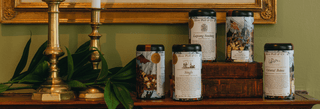Blog
-
Lexington and Concord/Liberty Teas
A look into the 250th Celebration of the “shot heard 'round the world."
-
Tea Health
According to the National Library of Medicine, “the beverage tea has been considered a health- promoting habit since ancient times. The modern medicinal research isproviding a scientific basis for this belief.
-
Matcha
Take a deeper dive into the health benefits of Matcha.
-
Japan Tea
A first hand experience sipping tea in Japan.
-
European Christmas Markets
Have you ever wondered about the traditional hot drinks served at Christmas markets in Germany and Austria? Let's dive into the world of glühwein, a beloved spiced wine that warms...
-
Holiday Markets
Are you ready to jingle all the way through Charleston's holiday markets? Get your festive spirit on and join the fun as we explore the best spots to shop, eat,...
-
Tea sommeliers
there are several organizations that offer tea sommelier certification, including the Specialty Tea Institute (STI) and the Tea Association of the USA (TAUSA).
-
Fall Toddy Brewing
In an effort to beckon cooler fall weather, we took to our backyard this week to document our favorite OP cocktail, the Winter Toddy. With a tart and sweet combination...
-
Red Wine Wassail Over Ice – A Festive Winter Cocktail
In the holidays we have served a warm wine wassail with red wine or port. Old English Wassail spices of orange peel, ginger, cinnamon, allspice, and cloves are steeped at...
-
Cider Spices Wassail Brewing
Wassail (Middle English 'wæs hæl' - ‘be you healthy’) refers both to the salute 'Waes Hail' and to the drink of wassail, a hot mulled cider drunk as part of...
-
More Halloween!
There is plenty of information about the holiday, so here is just a quick overview of the widely celebrated rituals and fun
-
Victorian Halloween Tea
Learn more about Victorian "death culture" and host your own Halloween party today!

